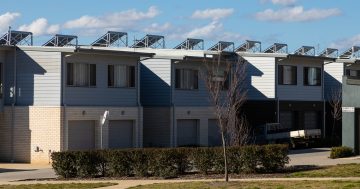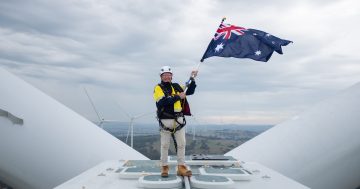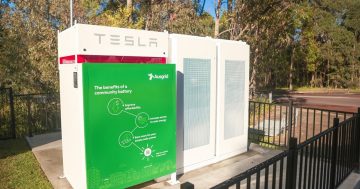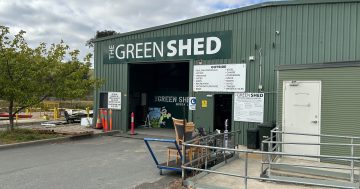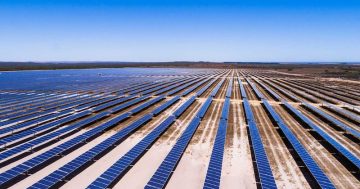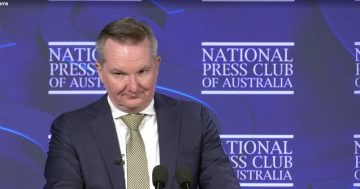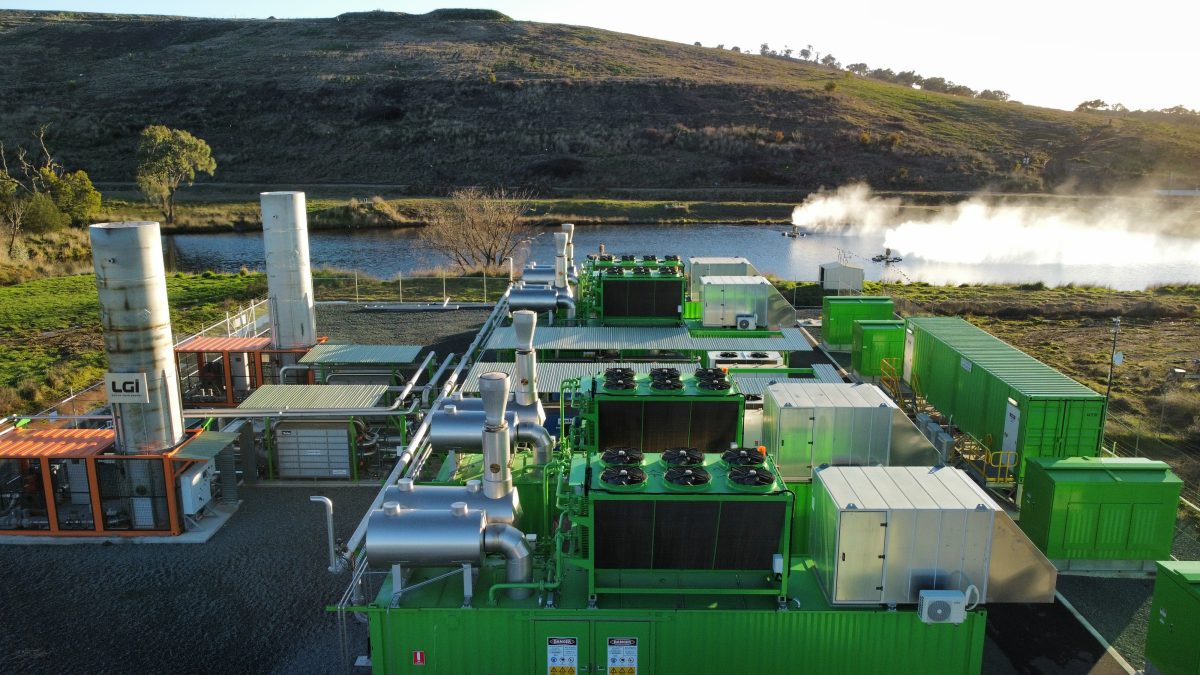
The current landfill gas to electricity plant at Mugga Lane tip. Two new generators will boost the plant after a successful three-year program. Photo: ACT Government.
An expansion of biogas-fueled electricity generation at the Mugga Lane landfill will be enough for the plant to power up to 10,800 homes a year.
The ACT Government will continue its partnership with Australian-owned and operated clean energy engineers LGI Limited and local utility Evoenergy to expand a three-year program that has been capturing methane emissions to run four 1 Megawatt (MW) generators and produce electricity for almost 6000 homes.
The expansion project will add two new 1 MW gas-to-energy generators, 12 MW of battery storage and a 20 MW grid connection.
Transport Canberra and City Services Minister Chris Steel said the bigger operation would generate 50,000 MW hours of dispatchable energy.
Mr Steel said the project would also reduce the amount of dangerous emissions from the landfill.
“As we work to divert more organic waste from landfill, we know we also need to tackle the emissions from landfill,” he said.
“Over the past three years, we have been able to reduce 764,000 tonnes of emissions through our partnership with LGI.”
Mr Steel said adding a new battery system would provide storage capacity and rapid dispatch of the renewable energy generated when the grid required it most.
“Further upgrades to the Mugga Lane site will allow us to go even further with our emission reductions building on the more than 89 million cubic metres of biogas captured at Mugga Lane, which has allowed for 105 Gigawatt hours of renewable energy to be generated,” he said.
LGI is expected to start work on the expansion in the coming weeks, which will include all relevant development approvals.
The project will mean two additional full-time positions employed on the site and significant investment into the local economy through the engagement of local contractors for everything from concreting to catering.
LGI founder and managing director Adam Bloomer said emissions from landfills without biogas management systems could be a significant problem and contribute up to 80 per cent of a local government’s carbon footprint.
“The ACT Government’s carbon-cutting approach of using proven, cost-effective technologies to capture and abate the harmful methane emissions from Mugga Lane and generate reliable, dispatchable (24/7) renewable energy is an example of what progressive governments can achieve by prioritising the environment,” he said.
Evoenergy CEO John Knox said the work required included the connection of new cables to the site and changes to the upstream network to cater for the 20 MW of renewable generation.
“The project will address technical challenges that can arise from this type of connection, and our commitment to creative engineering and delivery solutions will enable the net-zero emissions future and continued reliability of energy supply,” he said.














